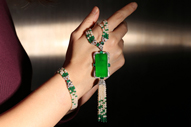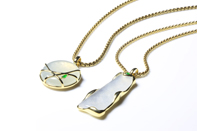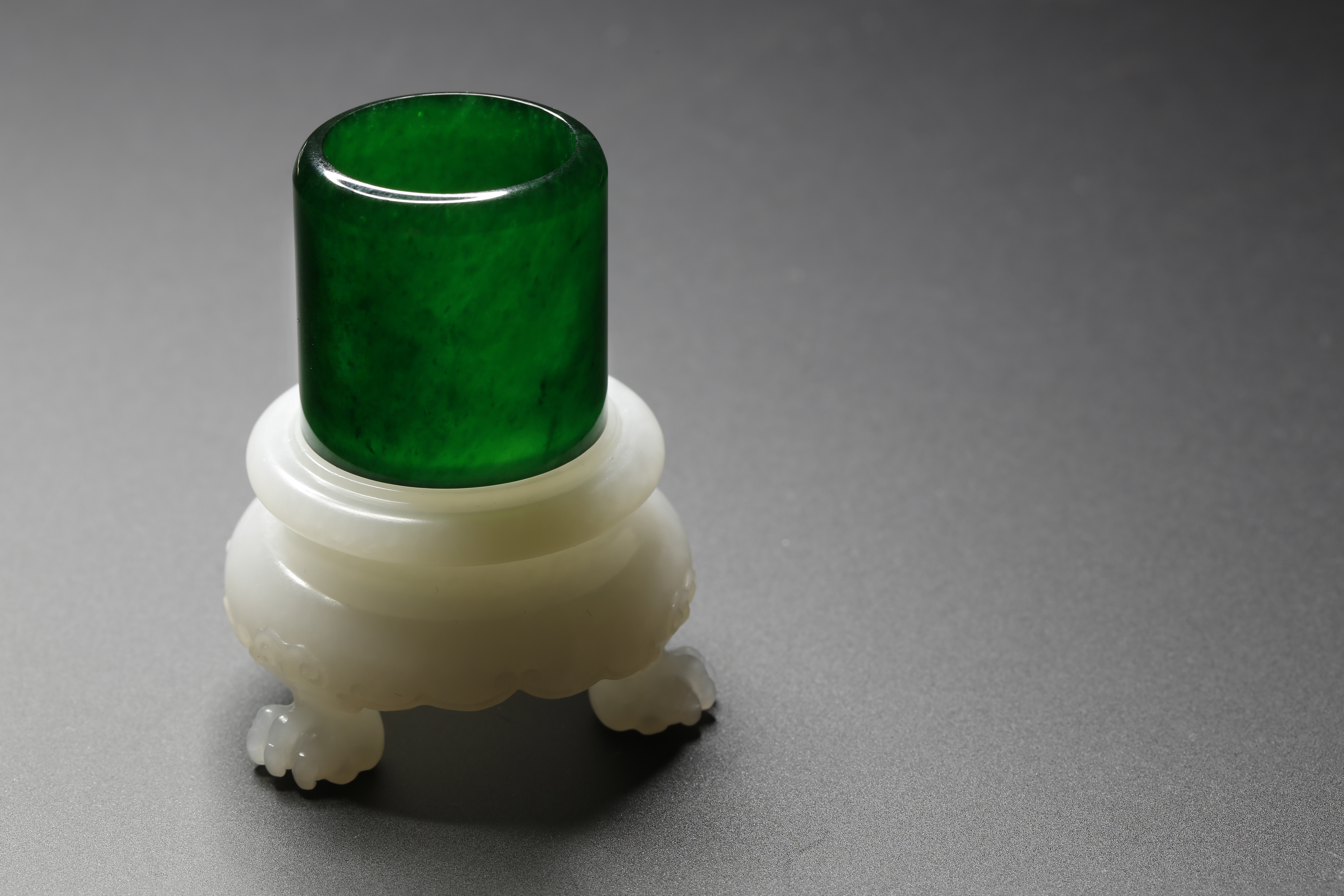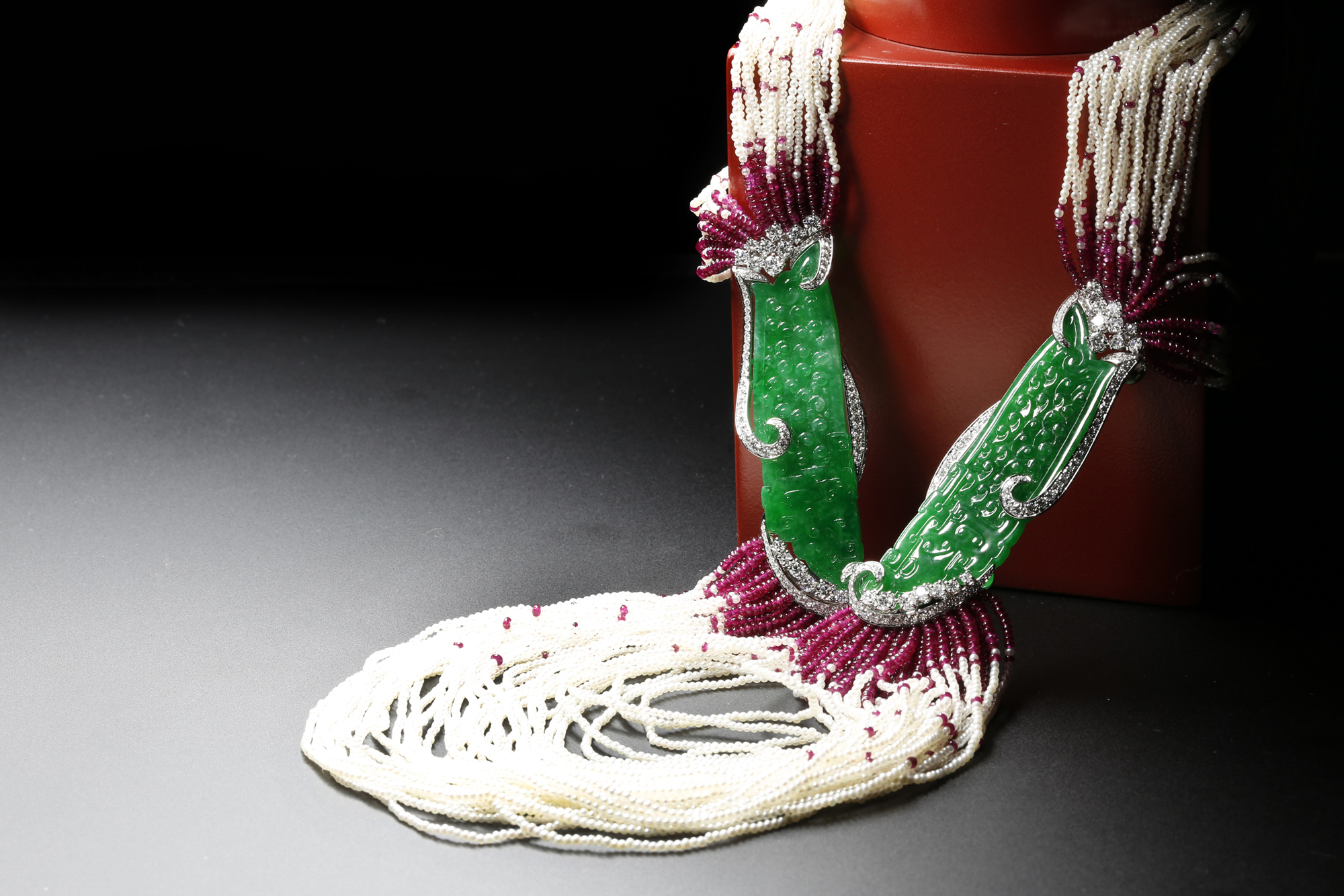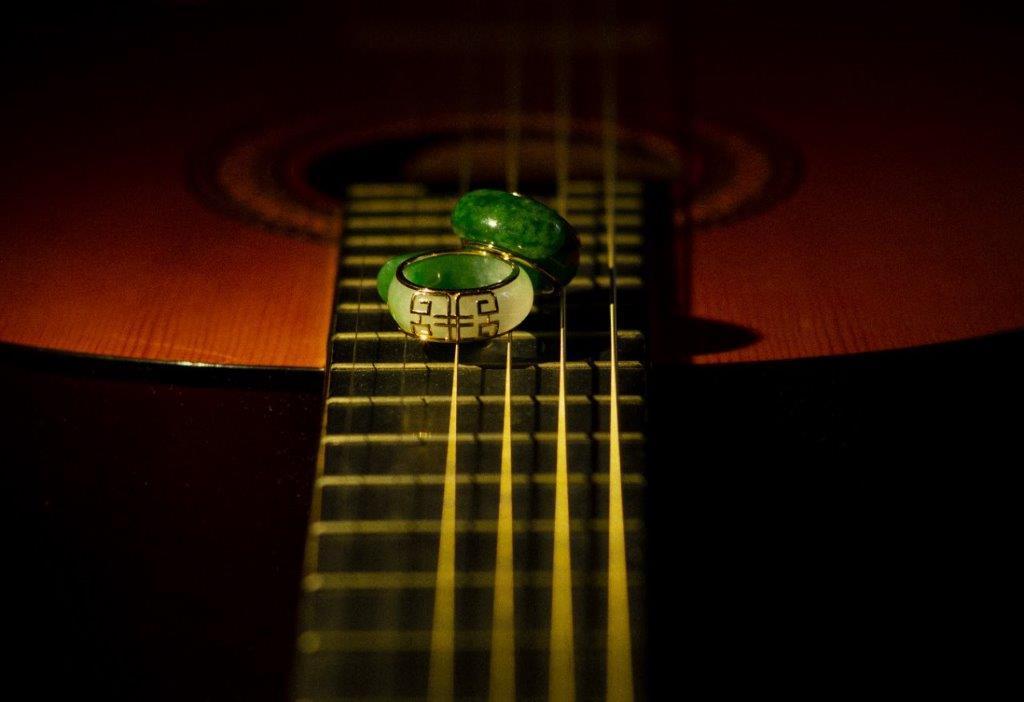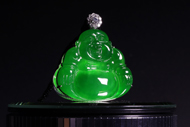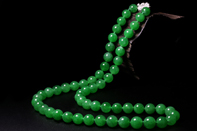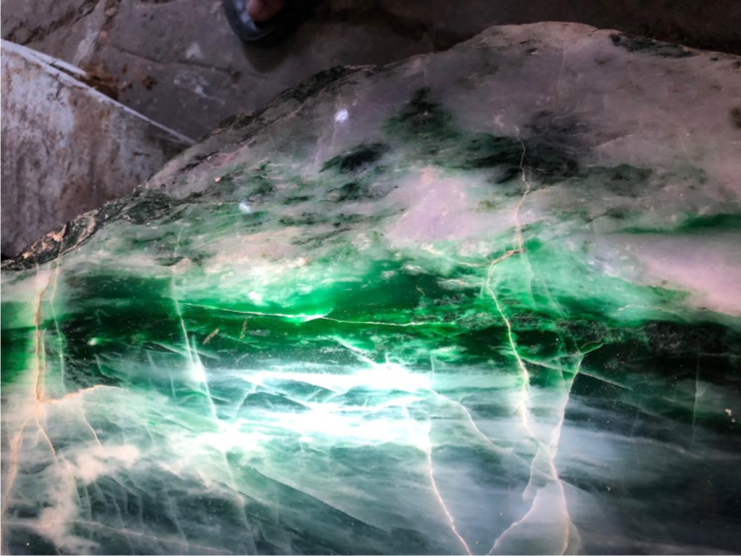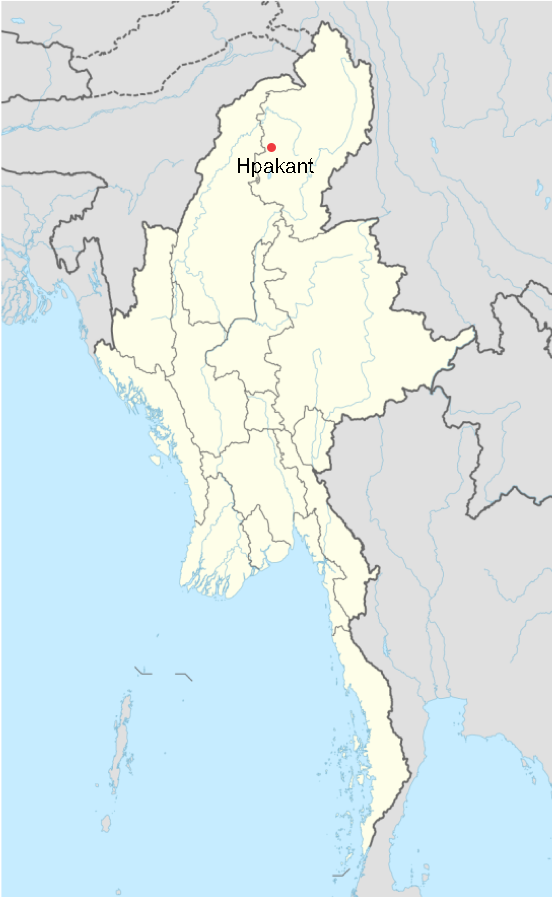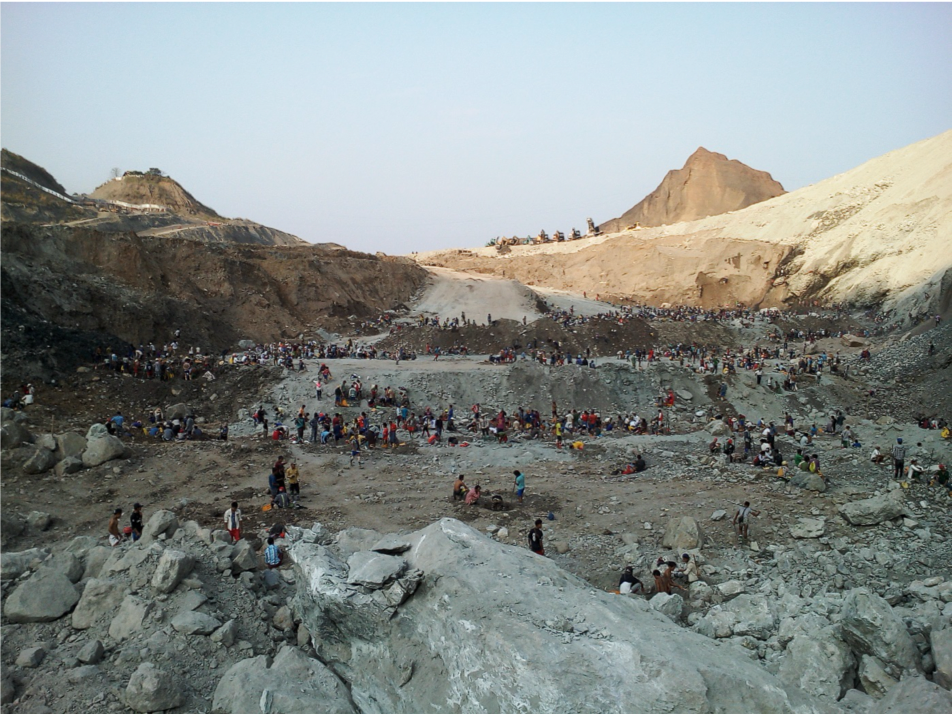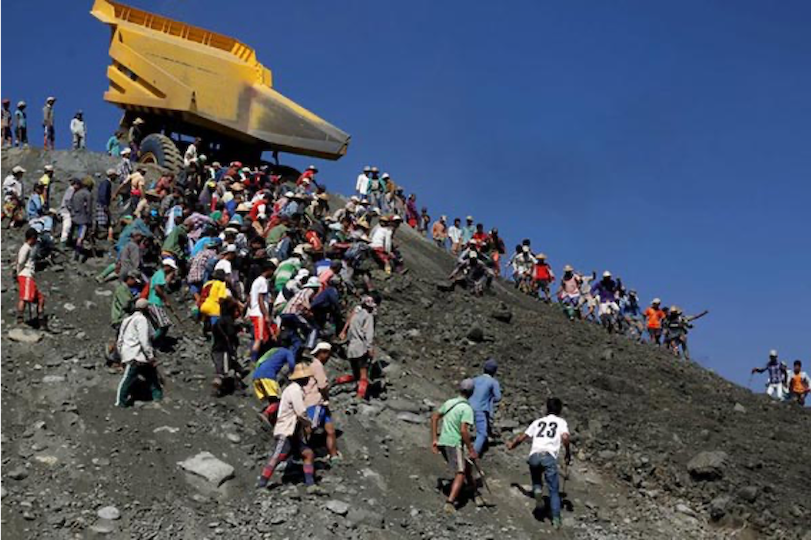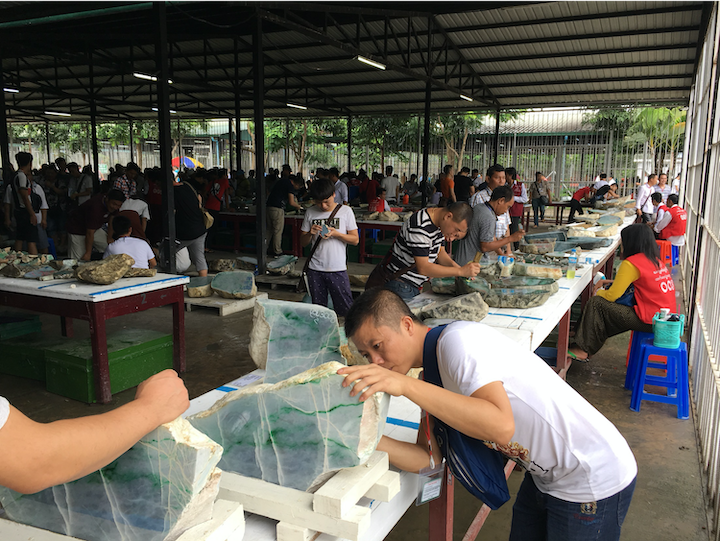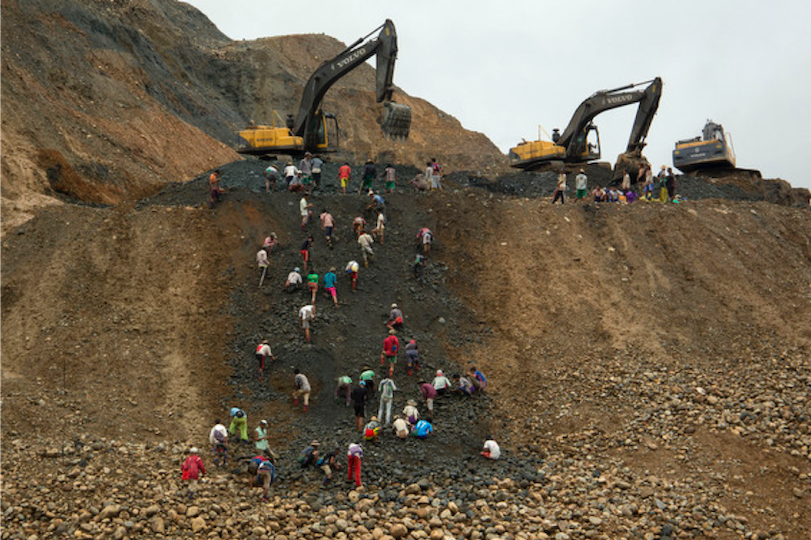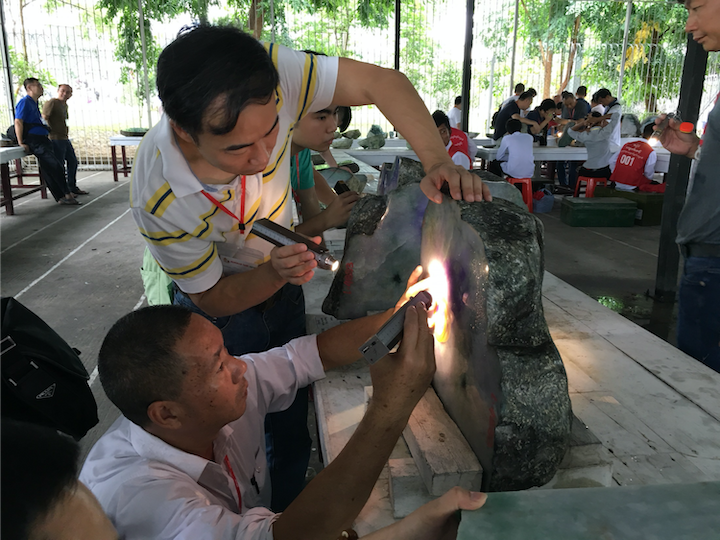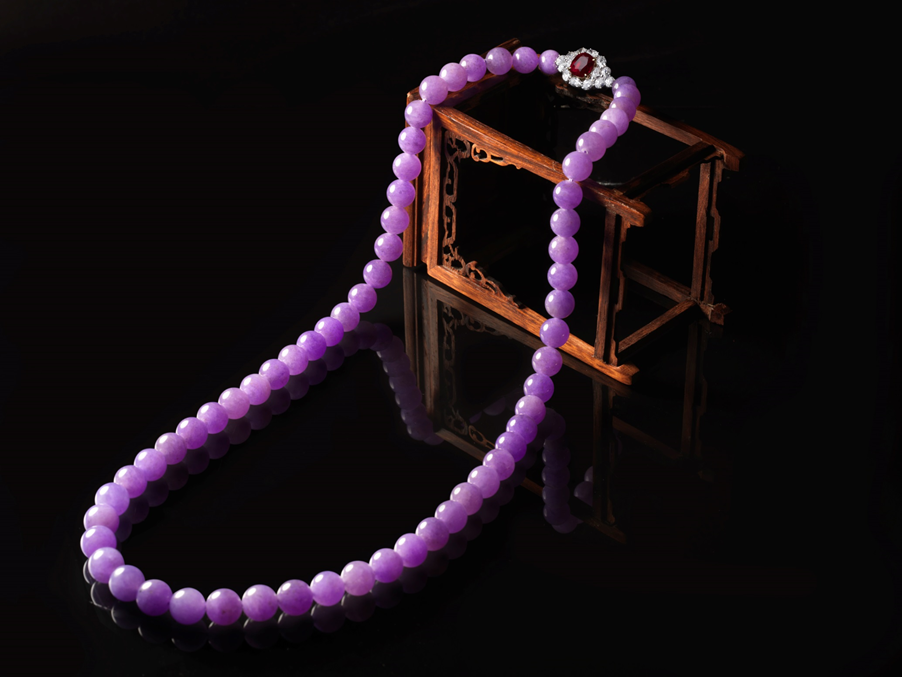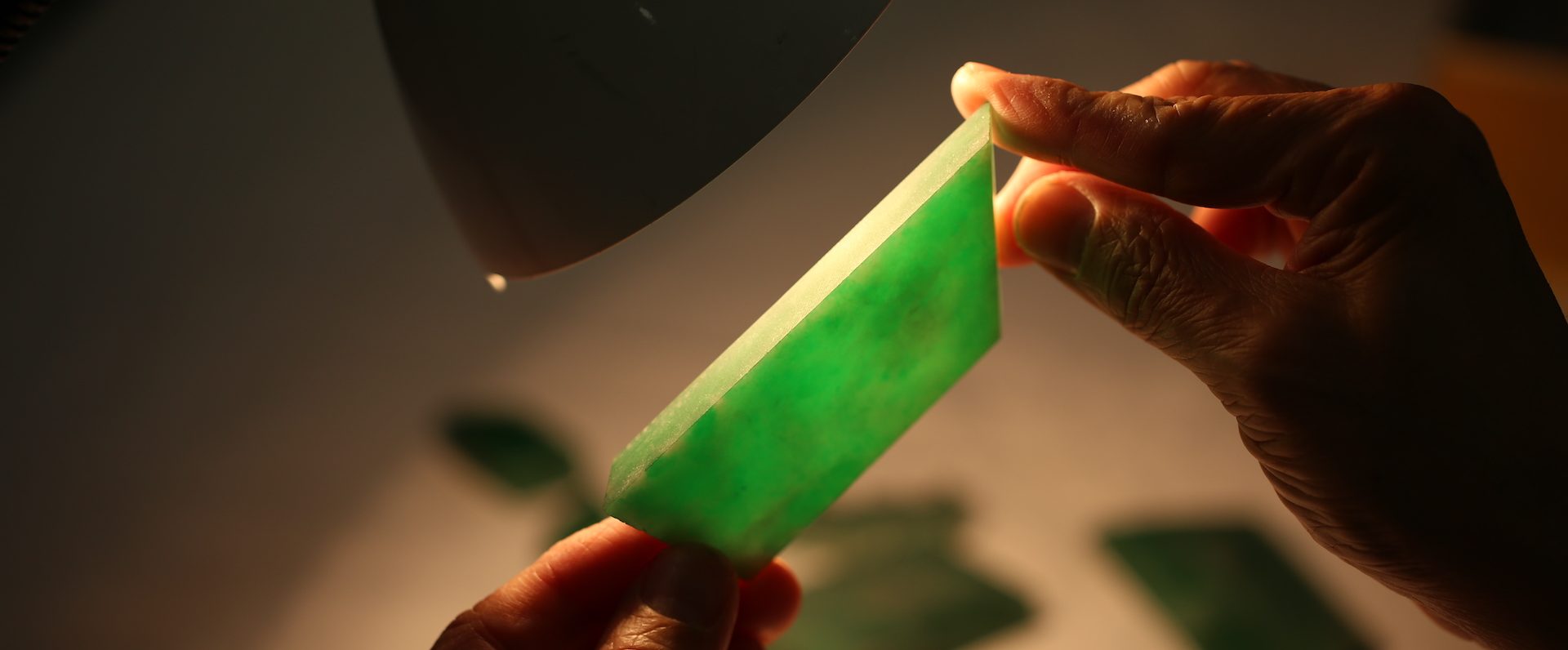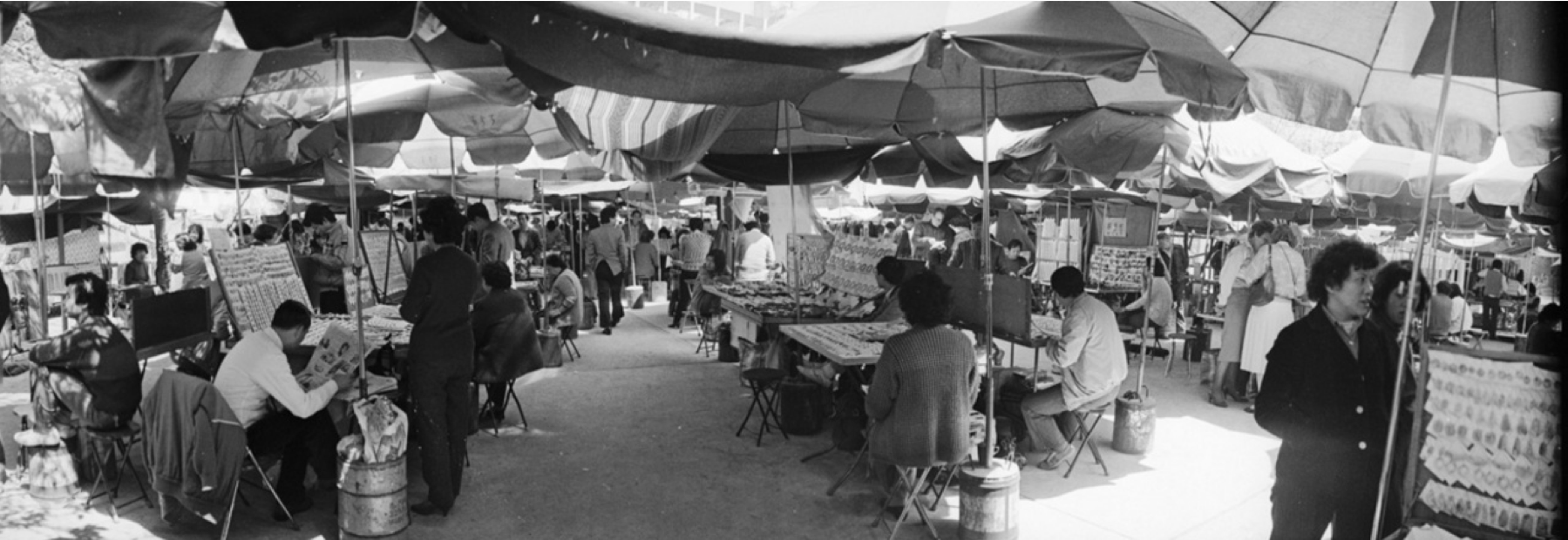Myanmar (also known as Burma)’s jadeite mine is located in Phakant, Northern Myanmar, on the bank of the Uru River, approximately 350 km north of Mandalay and Phakant, is where more than 95% of the world’s jadeite is mined.
In recent years, Phakant has been damaged heavily by the war, and it has also impacted jadeite mining. The Kachin Independence Army and the Burmese Army often clash in Northern Myanmar, plus drugs and plagues have made their people not dare to step foot on the ground. Furthermore, because Phakant is a less economically developed area, normal Burmese people would not go there if it weren’t for their livelihood. Even the Myanmar government has limited foreigners from entering the area.
緬甸北部 Hpakant 翡翠礦山
At present, all mines are owned by the Myanmar government. There are dozens of jadeite mines in Myanmar, some of which are in cooperation with the Myanmar government, while others are paid by the mining company through the government. Given the mining industry situation, the extraction period takes 3-5 years. The mined rough stones will be transported to the jadeite auction in Naypyidaw (The Myanmar Gems Emporium). After the jadeite is sold, the mining industry is required to distribute 10-15% of their profits to the Myanmar government as tax.
Mining was previously carried out solely by hand. After year 2000, excavators were used to mine jadeite. The annual rainy season in Phakant is from May to October, and because of the heavy rainfall, it lasts only from November to April each year that the mining labour can be resumed. Jadeite mining companies hope to dig up as much jadeite as possible in the limited mining period to achieve maximum profit. Miners needed to work 24 hours a day, 7 days a week. Even if a huge amount of jadeite roughs is excavated, often times the quality of jade is either fair or bad. Some mines have a lower chance of producing high quality jadeite. The mining owners explain that if not enough high-quality jadeite roughs are mined in a year, it will be difficult to make a profit, and after deducting the mining costs they might even incur losses.
According to statistics, on average, for every one hundred stones excavated, ninety-nine are just ordinary stones, only one is jadeite and it may just be an ordinary jadeite rough. This explains why high-quality jadeite rough is so precious.
Mining jadeite has also caused various environmental and safety problems. Landslides due to mining have caused many deaths per year. Not only that, deforestation from mining has also had severe environmental impacts, forcing locals to flee from their homes.
The latest news sources indicate that starting from mid-2020, all mining activities will be discontinued in order to protect the environment and to prevent the exhaustion of jadeite rough stones. For the near future, the Myanmar government will begin to re-establish better policies and regulations for jadeite mining.


